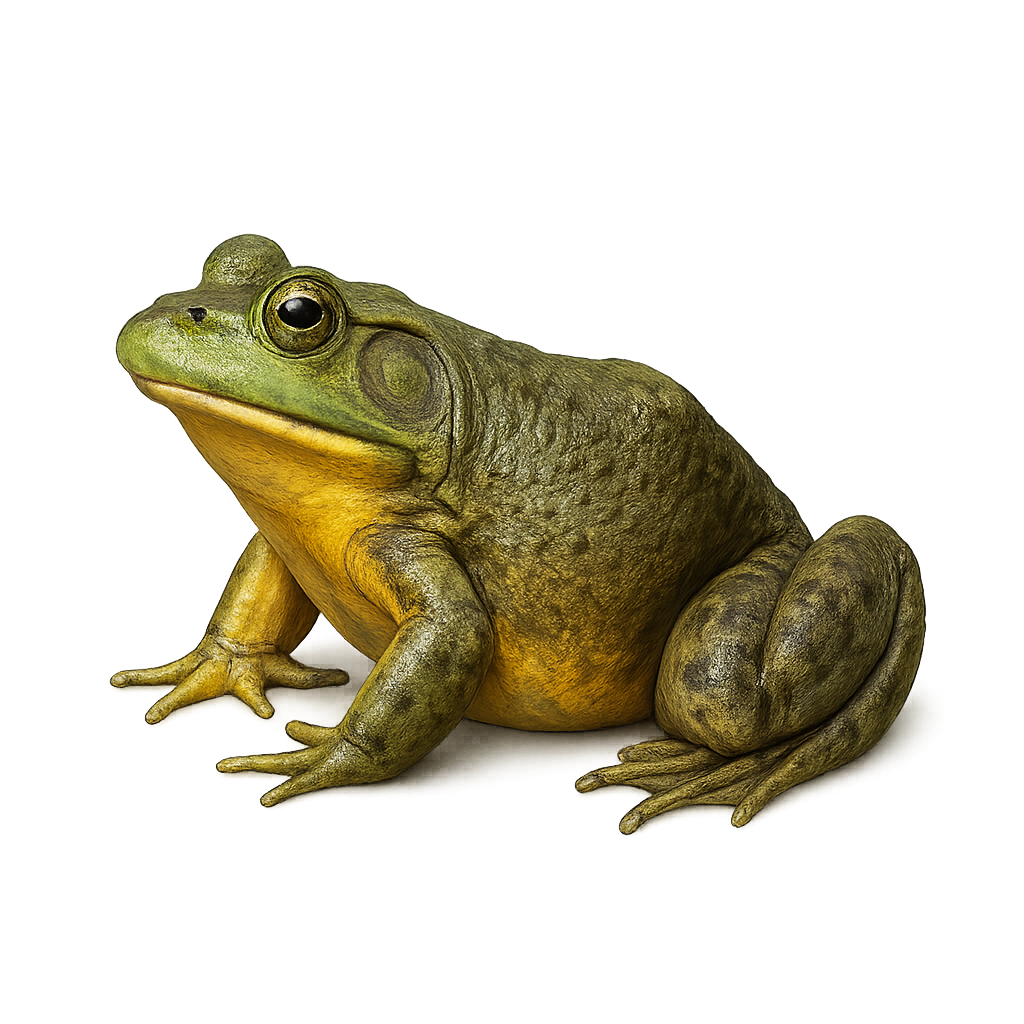Your wildlife photography guide.
Explore the american bullfrog in detail, study its behavior, prepare your shots.
Where to observe and photograph the american bullfrog in the wild
Learn where and when to spot the american bullfrog in the wild, how to identify the species based on distinctive features, and what natural environments it inhabits. The WildlifePhotographer app offers tailored photography tips that reflect the american bullfrog’s behavior, helping you capture better wildlife images. Explore the full species profile for key information including description, habitat, active periods, and approach techniques.
American Bullfrog
Scientific name: Lithobates catesbeianus

IUCN Status: Least Concern
Family: RANIDAE
Group: Amphibians
Sensitivity to human approach: Suspicious
Minimum approach distance: 3 m
Reproduction period: March to April
Incubation: 4 jours
Births: March to April
Habitat:
Ponds, marshes, lakes
Activity period :
Mainly active at night, generally discreet during the day.
Identification and description:
The American Bullfrog, Lithobates catesbeianus, is a species of frog native to North America. Known for its large size, it can reach up to 20 cm in length and weigh over 500 grams. Its skin is typically green or brown with darker spots, and it has powerful hind legs adapted for jumping and swimming. This frog is often found near stagnant water bodies like ponds, marshes, and lakes. It is famous for its loud, deep call that resembles a bull's bellow, hence its name. An opportunistic feeder, it consumes a variety of insects, small fish, and even small birds and mammals.
Recommended lens:
Macro – adjust based on distance, desired framing (portrait or habitat), and approach conditions.
Photography tips:
To photograph the American Bullfrog, focus on dusk or nighttime when it is more active. Use a macro lens to capture the details of its textured skin and expressive eyes. Approach slowly to avoid startling it, maintaining a distance of at least 3 meters. A tripod can be helpful to stabilize your camera in low light conditions. Try to capture its natural environment, such as reflections in the water or surrounding vegetation, to add context to your image.
From knowledge to field practice
A species profile helps you understand an animal. In the field, the challenge is often different. Remembering your own observations.
The WildlifePhotographer app allows you to:
• record your personal observations
• note locations, dates, and behaviors
• revisit your field references over time
• build a private and long-term field logbook
The app does not provide observation locations.
It helps you organize what you actually observe, with respect for wildlife.

